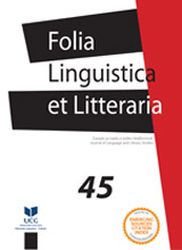MOBY-DICK, MODERNISM AND THE “POST-DEATH” NARRATION
MOBY-DICK, MODERNISM AND THE “POST-DEATH” NARRATION
Author(s): Vladimir M. VujoševićSubject(s): Studies of Literature, Theory of Literature, American Literature
Published by: Filološki fakultet, Nikšić
Keywords: post-death narration; Modernism; subjectivity; Moby-Dick
Summary/Abstract: There is a peculiar tendency among many first-person Modernist narrators to simulate the narrative perspective of “posthumousness” (as if these accounts were somehow narrated by the dead). The procedure (that could be termed the “post-death narration”) seems to be present in various proto-modernist and Modernist works such as Conrad's Heart of Darkness, Faulkner's The Sound and the Fury and Absalom, Absalom!, T.S. Eliot's The Waste Land, etc. This narrative perspective is entwined with the trauma discourse, and the article argues that some of the best known Modernist techniques (like the stream of consciousness) are based on the Gothic model of spectral narration. In the works of the genre, ghosts are often portrayed as traumatized, incommunicative, and disoriented “shattered selves” eternally entrapped in the closed space of a single, repetitive traumatic memory. This also seems to be the case with many Modernist narrators. The article shows various ways this genre convention of the Gothic has been (re)used in Modernist storytelling. Furthermore, the “post-death narration” could also be interpreted as a “symptom” of extreme subjectivity and epistemic frustration (which are typical features of Modernist narration in general). It is also claimed that the narrative perspective of “posthumousness” was first employed in Melville's Moby-Dick and that Ishmael, the narrator of the novel, could be seen as the “prototype” of this kind of Modernist “post-death” narration.
Journal: Folia Linguistica et Litteraria
- Issue Year: 2023
- Issue No: 45
- Page Range: 197-212
- Page Count: 16
- Language: English

